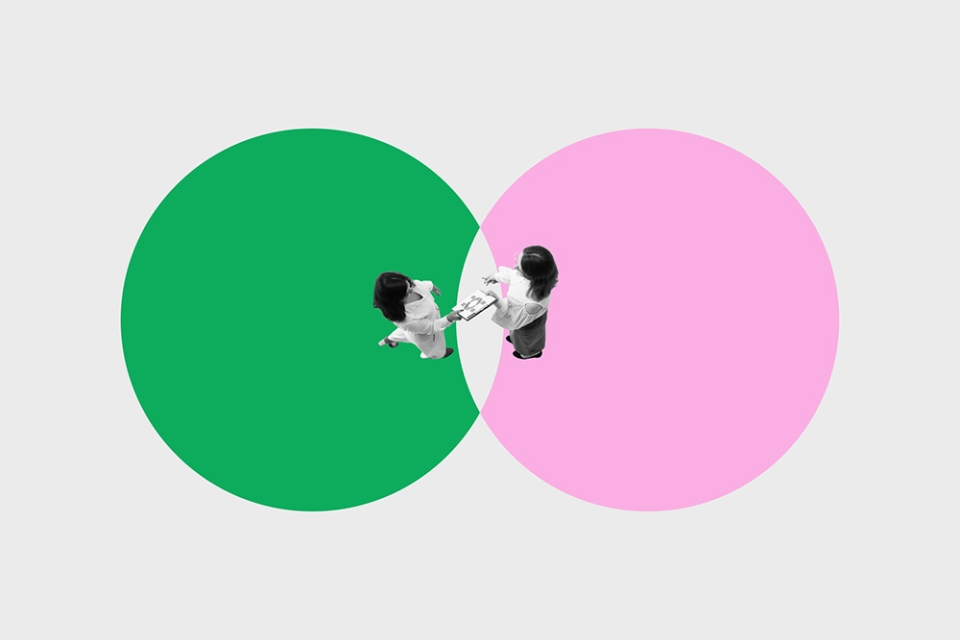Robin Hoyle, Head of Learning Innovation at Huthwaite International, discusses the first steps to creative  . Making creative thinking commercial has long been a challenge for team management and wider training activities. But there is a way to equip your people to make the creative change you want to see and it centres on creating an effective and purposeful strategy for creative change.
. Making creative thinking commercial has long been a challenge for team management and wider training activities. But there is a way to equip your people to make the creative change you want to see and it centres on creating an effective and purposeful strategy for creative change.
Introducing creative change
So what is change? Not least in relation to creativity. Disruption is a much over-used word. However, like all clichés, its ubiquity is powered by truth. Things have been disrupted. Industries which didn’t exist a decade ago have colonised whole areas of the economy – arguably through creative thinking.
Understanding the barriers to creative change
Culture, like disruption, is commonly used. It’s important to empower and inform through a clear strategy and highly effective communication. In short, you want your team to believe in the change.
Despite this, culturally there may be some barriers preventing creative change. These are fears about the unknown and commonly include:
- Fear of failure
- Fear of punishment for failure
- Fear of loss of group membership
Overcoming barriers to creative change
A clear plan which defines the steps required to achieve the goal has to be core to the creative change strategy. It is important to position any learning required as fixing a specific problem or potential problem or readying the organisation to take advantage of a specific opportunity.

1. A compelling positive vision: Recognising that there will be resistance to new ideas and change identifying what organisations and teams need to do to overcome this resistance
2. Formal training: Having defined the required skills it is vital to undertake formal training for those affected as early as possible in the change project. This formal process involves:
- Know why, why are we doing this and why now?
- Know what, what does good look like, how will I know I have been successful?
- Know how – what I need to do differently broken down into stages
3. Learner involvement: This requires opportunities for individuals to manage their own approach to practice and embedding the required skills. Informal learning requires a feedback loop, recognising individual progress and identifying options for future continuous development.
4. Learning in groups: Because we know that individuals are embedded in groups and are subject to group norms and assumptions, it is vital to learn as a group and spread the learning, this may include:
- Sales support
- Sales management
- Marketing
- Specialists (engineers, technicians, solution architects, etc)
5. Practice opportunities, feedback and enablers: Individual sales meetings may be perceived to have too much riding on them for individuals to ‘practice’ skills they have yet to master. To give confidence to try new things, mentors need to provide time for practice and may also manage practice activities including role play meetings, call reviews and team planning sessions.
6. Positive role models: Human beings have always learned through imitation. Where new skills are radically different, it may be necessary to see ‘what good looks like’ before they can imagine themselves adopting new behaviours.
7. Support groups: As we have seen new skills and the learning required to master them is not a predictable, linear process. What can be predicted is that some challenges will emerge and participants will need some kind of forum in which they can share challenges, seek solutions and also provide mutual encouragement.
8. A reward system: What gets measured gets done. We know this and so the behaviours we want to encourage need to be recognised, acknowledged and rewarded, where appropriate. This extends to the desired and admirable learning behaviours – building learner confidence that they are on the right track even when there are few visible beneficial outcomes from the change process.
Implementing cultural change is challenging. Asking for more creativity for a specific purpose of for competitive advantage can feel impossible. But, implement a clear strategy that is inclusive of the team and creativity will flourish and deliver – profitably - what the customer needs.







.webp)